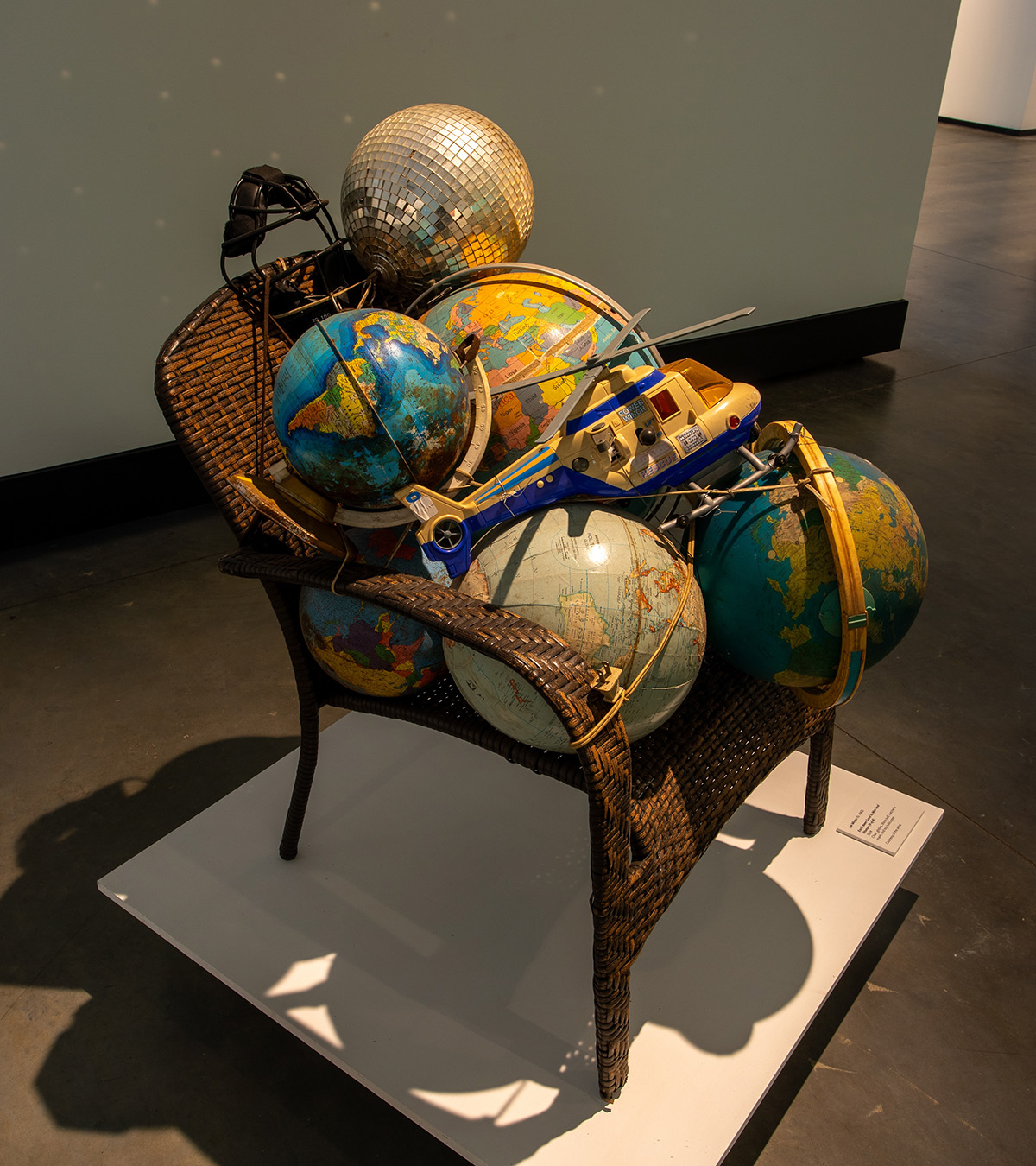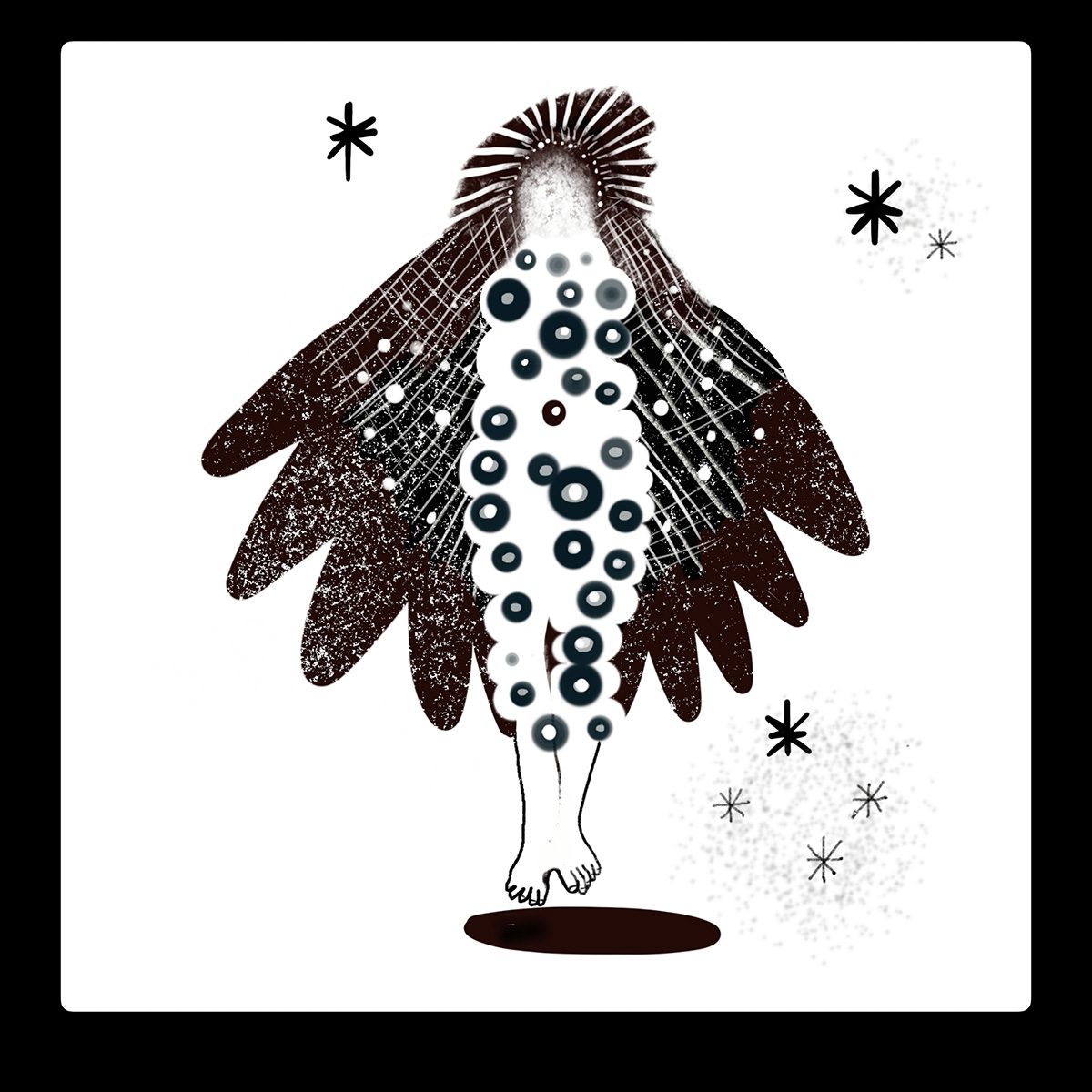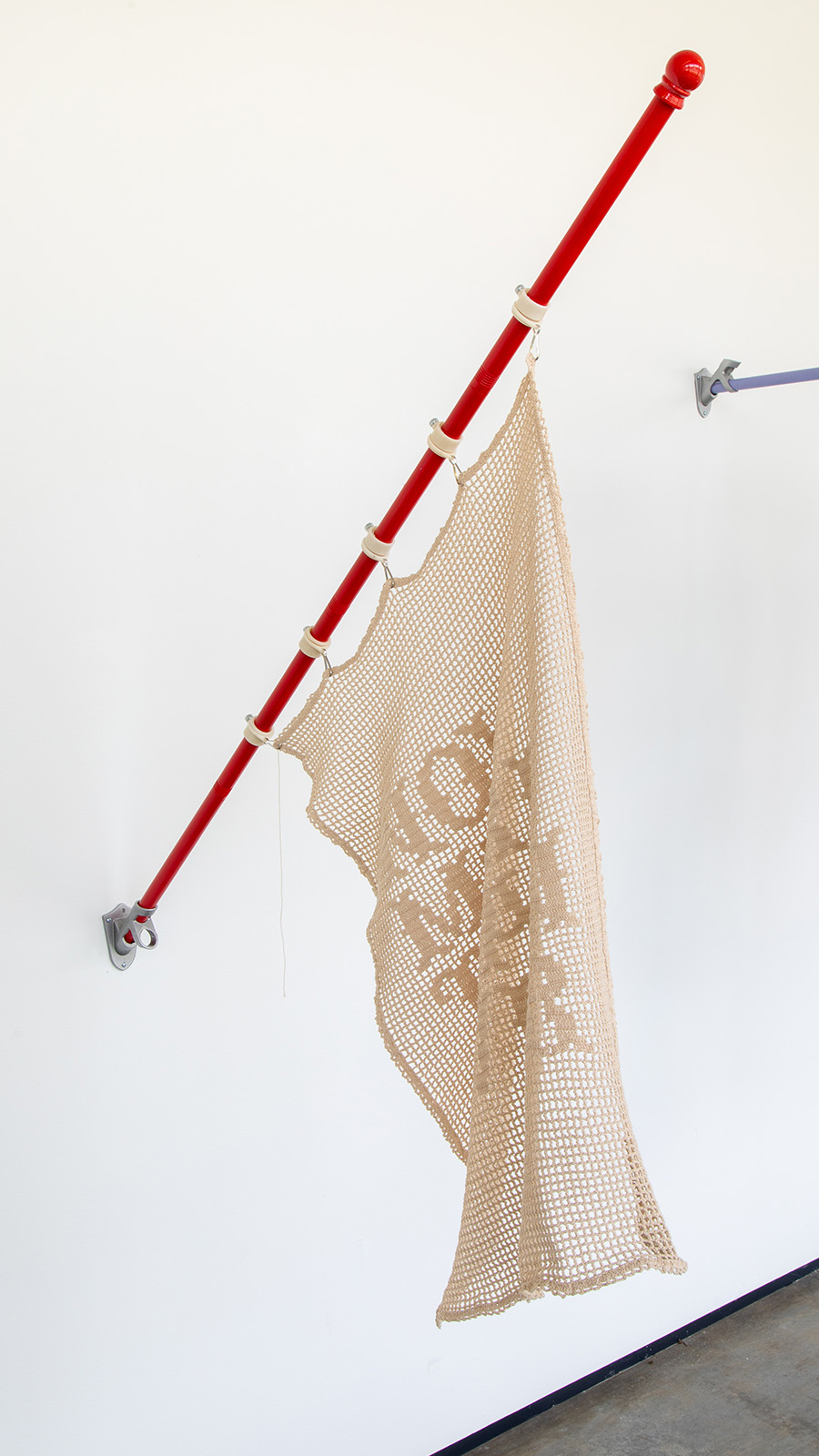 “North Birmingham,” by Celestia Morgan (b. 1981), archival pigment print, 2016.The University of Alabama at Birmingham is giving arts lovers the chance to choose which artwork will find a forever home at the university.
“North Birmingham,” by Celestia Morgan (b. 1981), archival pigment print, 2016.The University of Alabama at Birmingham is giving arts lovers the chance to choose which artwork will find a forever home at the university.
As part of the annual VIVA Health Gala fundraiser, “A Night of the Arts” at UAB’s Abroms-Engel Institute for the Visual Arts on Friday, Sept. 5, guests can cast a vote for their favorite piece — and help shape the university’s permanent collection.
The gala is the biggest fundraiser of the year and directly supports the programming of the UAB Center for the Arts, a nonprofit that encompasses four arts organizations: AEIVA, the Alys Stephens Performing Arts Center, ArtPlay Community Education and Arts in Medicine. Guests at “A Night of the Arts” Gala will be immersed in unforgettable music and visual arts experiences created to showcase the best of the organizations.
The all-inclusive evening of entertainment begins at 5:30 p.m. and includes valet parking, a pre-show reception with food and beverages, and a private concert by pop vocal group Wilson Phillips, followed by an after-party with heavy hors d’oeuvres and drinks, all for $250. Buy tickets or visit AlysStephens.org for more information.
Featured are four works by four Alabama artists who were included in AEIVA’s 2025 Alabama Triennial exhibition: Joe Minter, Celestia Morgan, Bethany Moody and Merrilee Challiss. Throughout the evening, guests will view the four outstanding works — each previously featured in AEIVA’s galleries — and cast a ballot for the piece they believe should join the collection.
The vote offers AEIVA’s community a unique sense of ownership in shaping the museum’s legacy, says John Fields, the Lydia Cheney and Jim Sokol Endowed Director of AEIVA.
 “Earth Been Good to Man and Woman,” Joe Minter (b. 1943). Mixed media, 2024.“The gala vote is one of my favorite AEIVA traditions because it directly engages our audience in the collecting process,” Fields said. “Each nominee has already been part of an AEIVA exhibition, allowing us to build a collection that preserves our exhibition history, honors the cultural identity of Birmingham and offers our community a tangible role in shaping the museum’s future.”
“Earth Been Good to Man and Woman,” Joe Minter (b. 1943). Mixed media, 2024.“The gala vote is one of my favorite AEIVA traditions because it directly engages our audience in the collecting process,” Fields said. “Each nominee has already been part of an AEIVA exhibition, allowing us to build a collection that preserves our exhibition history, honors the cultural identity of Birmingham and offers our community a tangible role in shaping the museum’s future.”
Past acquisitions through the gala vote are works by Vadis Turner and Michael Dixon — two of AEIVA’s most iconic exhibitions from recent years. The selections “reflect the energy and taste of our community on that particular night,” Fields said.
Meet the artists whose works are up for vote
Merrilee Challiss is a multidisciplinary artist whose work — spanning drawing, painting, sculpture and animation — draws from mysticism, spirituality and ritual. For Challiss, her artistic practice is sacred and focused; she treats artmaking as a form of cosmic inquiry. Influenced by Gnostic philosophy and alchemical processes, her work acts as a conduit for archetypal, divine feminine energies that move across time and culture. Challiss’ visual language is rooted in repetition and symbolism. Recurring forms like eyes, hands and goddess figures gesture toward a deep connection between her subconscious and the cosmic, collective consciousness. Filtered through flat color, graphic linework and meticulous layering, her work visually references artists like Peter Max, Charlie Harper and Hilma af Klint. In her animation “Feral” (2023), a single goddess figure shifts through 150 hand-drawn transformations, referencing deities such as Ishtar, Isis and Lilith. The movement depicts the never-ending passage of sacred feminine power, an archetypal energy that resists erasure. The figure stays in constant flux: fierce, fluid and uncontained. In Challiss’ work, the mystical becomes a tangible threshold between the seen and unseen, the sacred and the everyday, where transformation feels both ancient and immediate.
 “Feral,” by Merrilee Challiss (b. 1971), digital animation, 2023. Courtesy of the artist.
“Feral,” by Merrilee Challiss (b. 1971), digital animation, 2023. Courtesy of the artist.
Joe Minter is a Birmingham-based artist, activist, veteran and the creator of African Village in America, a sprawling art environment built from salvaged materials around his home in Titusville. For Minter, art is a form of testimony, a way to honor forgotten peoples and histories and to share messages of love, peace and survival. In “Earth Been Good to Man and Woman” (2024), four found wicker chairs cradle an array of secondhand objects: globes, disco balls, catcher’s masks, toys. The chairs evoke rest and reflection, but also absence, suggesting those who are no longer present, or not yet heard. The items strapped into their seats carry echoes of joy and violence, innocence and spectacle. Collectively, these sculptures suggest a quiet reckoning with inheritance: What are we given? What do we carry forward? What is left behind? Like many artists who incorporate found objects into their work, Minter believes discarded things carry memory. By combining the discarded and the sacred, the playful and the painful, he offers these chairs not just as sculptures, but as sites of collective reflection, artifacts of a world both wounded and wondrous, still capable of teaching us how to see and how to care.
 “Flag 2 (Cornbread),” by Bethany Moody (b. 1989). Crocheted cotton warp thread and flagpole, 2025. At its best, a flag is a unifying symbol, meant to rally people under a shared belief. Bethany Moody explores and destabilizes that idea with “Flag 2 (Cornbread),” a sculptural textile that draws its title from a New York Times op-ed offering soul food as comfort for a culture in crisis. At the center of the work is the phrase “Now, More Than Ever,” a line that has circulated from Richard Nixon’s 1972 campaign slogan to headlines about everything from climate change to fast food. Crocheted into the piece using filet crochet and cotton seine twine — an inflexible thread built to endure tension — this ubiquitous phrase becomes a container of anxiety. According to Moody, “In weaving, tension lies in the warp threads; here, it is held in the text itself.” Part banner, part protest, part baited promise, the flag questions whether the current moment is uniquely urgent, or simply one in a long line of crises ignored or overwritten. It references the tradition of domestic needlework and its familiar maxims but resituates that history within the context of cultural exhaustion and misinformation. Moody’s broader practice reclaims discarded materials and craft-based methods to examine what society chooses to preserve or discard. With “Flag 2,” she suggests that slogans alone will not save us, especially when they offer comfort without accountability.
“Flag 2 (Cornbread),” by Bethany Moody (b. 1989). Crocheted cotton warp thread and flagpole, 2025. At its best, a flag is a unifying symbol, meant to rally people under a shared belief. Bethany Moody explores and destabilizes that idea with “Flag 2 (Cornbread),” a sculptural textile that draws its title from a New York Times op-ed offering soul food as comfort for a culture in crisis. At the center of the work is the phrase “Now, More Than Ever,” a line that has circulated from Richard Nixon’s 1972 campaign slogan to headlines about everything from climate change to fast food. Crocheted into the piece using filet crochet and cotton seine twine — an inflexible thread built to endure tension — this ubiquitous phrase becomes a container of anxiety. According to Moody, “In weaving, tension lies in the warp threads; here, it is held in the text itself.” Part banner, part protest, part baited promise, the flag questions whether the current moment is uniquely urgent, or simply one in a long line of crises ignored or overwritten. It references the tradition of domestic needlework and its familiar maxims but resituates that history within the context of cultural exhaustion and misinformation. Moody’s broader practice reclaims discarded materials and craft-based methods to examine what society chooses to preserve or discard. With “Flag 2,” she suggests that slogans alone will not save us, especially when they offer comfort without accountability.
Celestia Morgan’s “North Birmingham (Skymap)” is one of a series of photographs based on research into Birmingham’s history of redlining, a discriminatory practice where financial services, like mortgages and insurance, were denied or limited to residents of certain neighborhoods, often based on their race or ethnicity. The term “redlining” refers to the lines drawn around areas deemed a “high risk” investment, many of which had higher proportions of Black residents. Though redlining officially came to an end in 1968 with the passage of the Fair Housing Act, it has had a lasting impact on minority communities’ ability to build equity through homeownership and to access resources like education, jobs and health care, contributing to significant wealth gaps between racial groups. In Morgan’s series of sky images, the outlines of Birmingham neighborhoods that were once redlined are superimposed over idyllic images of the sky as a meditation on the way discriminatory policies stifle the social and economic aspirations of the affected communities.
The “A Night of the Arts” Gala is in honor of Lydia Cheney and Jim Sokol, strong advocates and supporters of the arts who give generously of their time and resources to further the missions of arts initiatives across the Birmingham community and beyond. Read more about their support of the arts.
Sponsorship and VIP tickets to the gala are available and include dinner by Helen Restaurant on the Sirote Theatre stage, where guests will have the opportunity to meet and have their photo taken with the members of Wilson Phillips. Make a reservation.